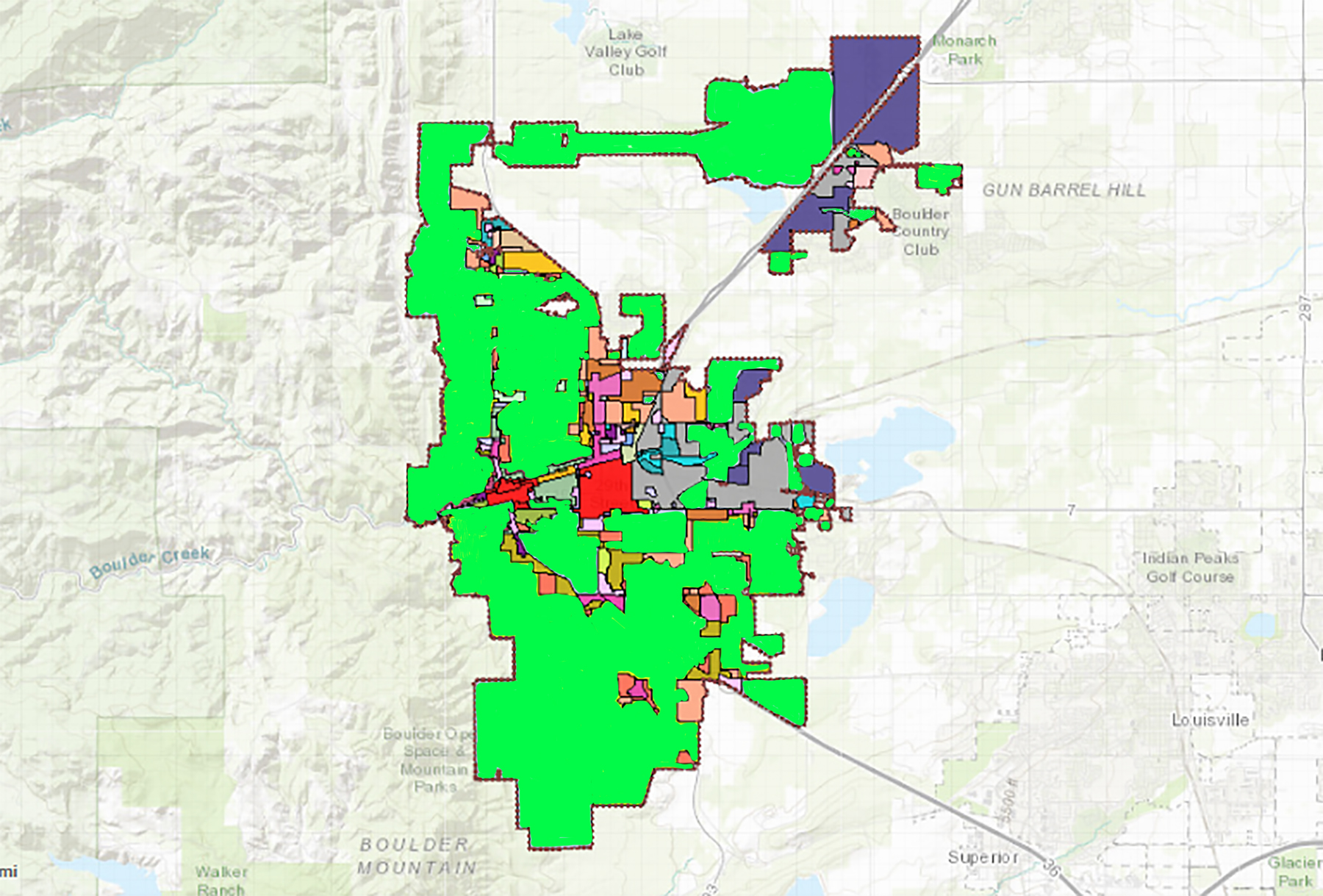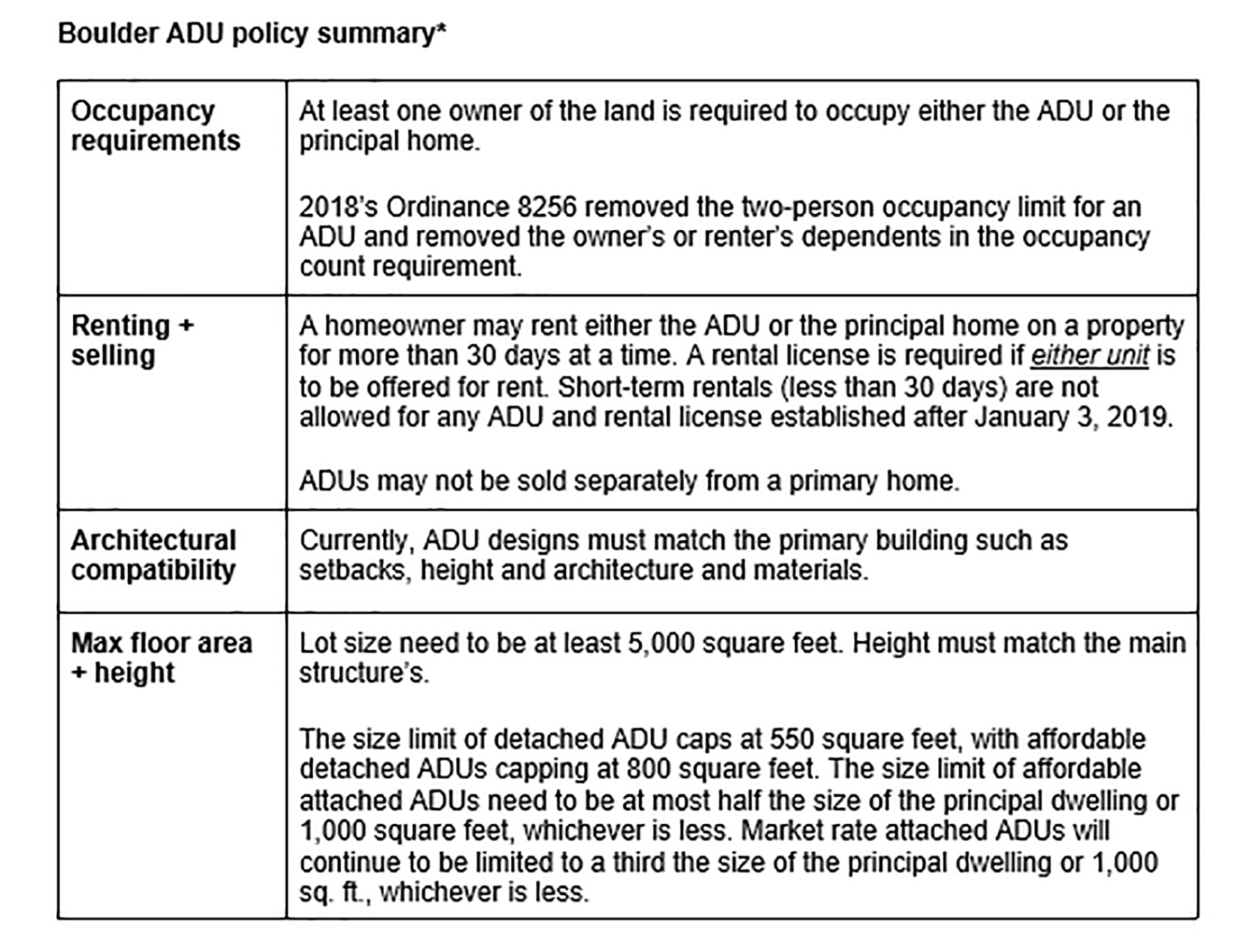ADUs, or accessory dwelling units, add compelling value for Boulder, homeowners and renters. They add density into established neighborhoods, bring more rentals into the city and homeowners can use the separate building on their property to rent out, host guests or family, or use as a studio or workspace.
With a new housing opportunity and affordability dialogue in the works, Boulder City Council looks to relax the city’s grip on building regulations, and one of these potential decisions includes a shift in law so that ADUs can exist on the same lot as housing cooperatives. Council claims that allowing these to co-exist on the same lot would not change the co-op resident restriction or increase occupancy, but rather create more space within existing communities. Boulder has maintained a very specific set of regulations around these secondary living spaces.
While ADUs represent a great way to introduce more affordable housing options and density in Boulder’s lower-density regions, not every zoning district accommodates these units. Currently, Boulder has eight zone districts that permit ADUs — primarily low density and a portion of medium density zones.
Council decides where ADUs can be built and which areas cannot sustain them, and a big factor in this remains the need to provide additional housing options at a different price point.

“The areas that permit ADUs constitute places where we’re trying to introduce more density and affordability, and these are typically single-family low-density zones,” explains Charles Ferro, the City of Boulder’s development review manager. “In medium- and higher-density zone districts, you can already do multifamily residential housing already, so it’s not as attractive of an option.”
As ADUs represent a way for Boulder to introduce more “invisible density” in lower density regions, high density areas that already facilitate space plenty of housing through duplexes, triplexes, apartments and townhomes don’t have the same need or space.
Currently, the western and southern regions of Boulder along Flagstaff and the Flatirons are zoned to accommodate ADU, as well as some eastern regions, with the number of ADUs allowed limited in the Residential Low zoning districts (RL-1 and RL-2). For a more complete visual of what zoning districts allow ADUs, check out this map the city provides.

Boulder “affordable” ADUs
In 2018, Boulder adopted an updated ADU ordinance to create a new type of ADU called the affordable ADU, which approved the building of larger spaces without providing additional parking in exchange for limiting rent to 75 percent of the Area Median Income based on bedroom quantity. The new ordinance also updated regulations surrounding ADU construction, such as removing the five-year minimum age requirement for the primary home to create an ADU.
Known as “mother-in-law suites” or “granny flats,” the accessory dwelling units benefit homeowners by providing supplemental income through renting or use as an Airbnb, facilitating space for additional family support and creating a more varied housing texture across the board. These little homes have separate kitchens, sleeping, and bathroom facilities from the principal residential unit on a single-family lot.
Moving forward into the new year, council members now also seek to open Boulder up to more housing possibilities by further relaxing the laws surrounding the secondary dwellings.
Some of these changes in the pipeline include removing the architectural design consistency requirements for existing detached structures (such as a shed or garage) that could potentially serve as ADUs, and relaxing on roof height restrictions for an existing ADU conversion. The design and roof height requirements would remain in place for new ADU construction, but relaxing the laws on existing structures should help homeowners avoid expensive and extensive renovations in lieu of creating more “legal” living spaces.
Another discussion on the table for council members constitutes the prohibition of ADU conversion into condos and sold separately from the main house. These updates will go back to Council on February 4th for a third reading before anything gets finalized.



